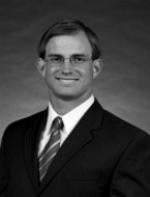On September 10, 2014, California Governor Jerry Brown signed into law the Healthy Workplaces, Healthy Families Act of 2014. As a result, most employers in California will be required to provide up to 24 hours (3 days) of paid sick leave to their employees beginning July 1, 2015. The following are some of the key requirements of the Act.
Who Is Covered
To be covered under the new law, an employer needs to have at minimum only one employee who works 30 or more days in California within a year from the commencement of their employment. The law will apply to all such employees who meet that threshold (including part‑time and temporary employees), except for: (1) those employees who are covered by a collective bargaining agreement that provides for paid leave, among other requirements; (2) certain construction industry employees covered by a collective bargaining agreement, even if the agreement does not provide for paid leave; (3) in‑home supportive service providers; and (4) airline flight deck and cabin crew employees, as long as they otherwise accrue paid time off of at least one hour per every 30 hours worked.
Exempt employees are also covered. For purposes of calculating sick leave accrual, the law presumes that exempt employees work 40 hours per week, unless the employee’s normal workweek is less than 40 hours (in which case the lesser amount will be used).
Sick Leave Accrual
Under this new law, covered employees will accrue paid sick leave at the rate of one hour for every 30 hours worked. However, an employer may limit the use of paid sick leave to 24 hours (3 days) per year. Nonetheless, an employee may accrue more than the limited amount of 24 hours that could be used in a year. In that case, similar to the carryover rules related to vacation accrual in California, employers must allow their employees to carry over all unused, accrued paid sick leave to the following year. But, again similar to the vacation rules, the employer still may cap an employee’s total sick leave accrual at a maximum of 48 hours.
Employers who already provide sick leave for their employees do not need to provide any additional sick leave as a result of the Act, so long as their policies provide sick leave for the same purposes and under the same conditions as the new law, and either (a) satisfy the accrual, carryover, and use requirements of the new law, or (b) provide at least three days of paid leave each year.
When Sick Leave May Be Used and How It Is Paid Out
An employee may use sick leave for the treatment of a health condition or for preventative care related to the employee or an employee’s family member (which includes a child, parent, spouse or registered domestic partner, grandparent, grandchild, or sibling). Such sick leave also can be used after the employee was a victim of domestic violence, sexual assault, or stalking. Nonetheless, employees must be employed for 90 days before they can begin using their accrued sick leave, even though they actually begin accruing the leave itself after working only 30 days. After the employee reaches the threshold period of employment, the employer must permit the employee to use the paid sick leave upon an oral or written request. Where the need for sick leave is “foreseeable,” the employee must give reasonable advanced notice. But, the employee need only give notice “as soon as practicable” when the need for leave is “unforeseeable.” In any event, an employer may set a minimum increment for using sick leave, so long as that increment does not exceed 2 hours.
With regard to payment, the employer must pay an amount equal to the employee’s regular hourly wage for each hour of sick leave used. Such payment must be made by the payday for the next regular payroll period after the leave was taken. Even though employees may have a bank of accrued sick leave time upon the end of their employment, the employees have no right to be paid for that remaining unused, accrued time (unlike the rules related to accrued vacation time). In fact, the new law does not require an employer to pay out accrued sick leave upon termination of employment, even though it does mandate that former employees who are rehired within one year regain their previously unused, accrued sick leave bank.
Posting Notices and Recordkeeping
The new law also imposes certain posting and recordkeeping requirements on covered employers. In particular, employers must display a poster in their workplaces explaining the new sick leave accrual requirements. Employers also must inform new employees in writing of their sick leave accrual rights. In addition, employers must provide written notice of the amount of sick time accrued after each pay period to all employees, either through the employee’s itemized wage statement or in a separate document.
Meanwhile, the law also requires employers to maintain, for at least three years, records reflecting the hours worked and sick leave accrued and used by each employee. Employers must make these records available, if requested by either the employee or the Labor Commissioner.
No Discrimination or Retaliation
Lastly, the law prohibits employers from discriminating or retaliating against employees for exercising their rights to use their sick leave. In that regard, there is a “rebuttable presumption of unlawful retaliation” if an employer denies the employee the right to use accrued sick days, or takes an adverse employment action against an employee within 30 days of: (1) filing a complaint with the Labor Commissioner alleging a violation of this law; (2) cooperating with an investigation of an alleged violation of this law; or (3) opposing a policy, practice, or act prohibited by this law.
In light of the passage of this new law and its requirements, we recommend that all employers review their sick leave and paid leave policies before the end of this calendar year.



 />i
/>i

